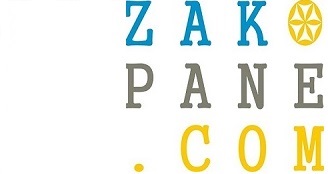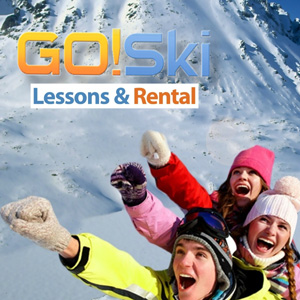Around Podhale by car
When choosing Zakopane or its surroundings as a vacation destination, we usually have to decide which kind of transport will be the most useful and clever. Although the city authorities are trying as best they can to encourage tourists to use public transport, ultimately most people get here by car. This solution has both advantages and disadvantages. Let’s take a closer look at them, to avoid unpleasant surprises on the spot and to take advantage of the benefits of moving around Podhale by car.

Benefits
Although environmentalists blow the whistle at every peak of the season, and the issue of air pollution due to excessive car traffic returns like a boomerang, we admit – the car will often be easier for us. We will not depend on capricious bus drivers who do not always travel according to schedule. We will not have to interrupt the meeting, or leave the trail too early – being late means a risk of salty taxi bill when we pass the last evening bus ride. We will also reach places that are difficult or not accessible to non-motorists. And, with a bit of luck, however, we will save time. Despite traffic jams and a long search for parking spaces, we will be faster anyway. Especially, we can recommend this option outside the peak season. In a peak season, especially in winter with intense snowfall, the pleasure of standing in a giant traffic jam will not pass us by. However, this is not always the case, and then we will decide when to leave the house, instead of adapting our schedule to the bus once every two hours. It is impossible to ignore the issue of comfort, in the car no one will be forced to occupy a “standing place”, risking injury in the event of an accident and enjoying the fact that has any place at all.
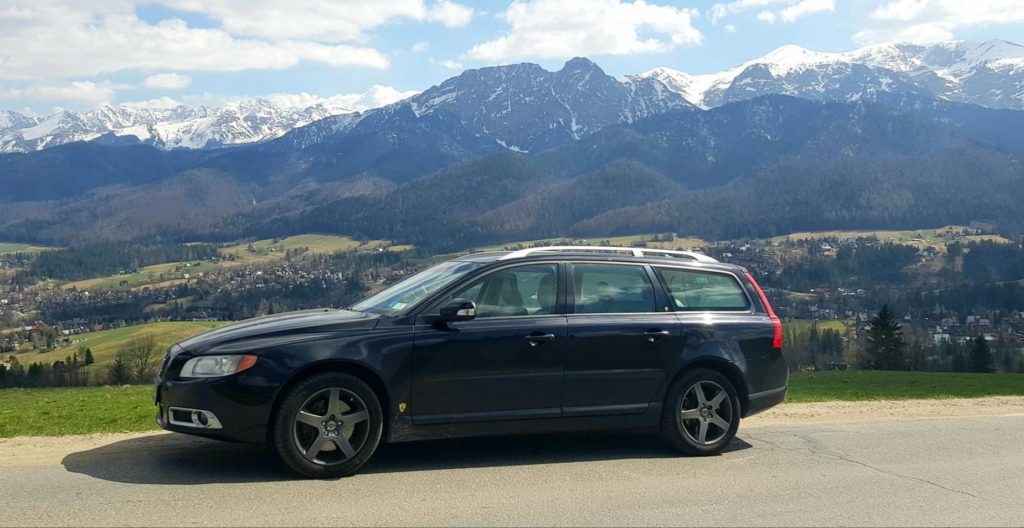
Charms of “Zakopianka” – main road to Zakopane
The most popular way to Podhale leads the so-called Zakopianka. It is a route leading from Cracow to Zakopane. About 100 km of a road in most of the two-lane, winding on wavy terrain, very attractive in the beautiful weather. It has been rebuilt and improved for years, which slowly makes it more friendly to drivers. With each new interchange, viaduct or additional track, the travel time is reduced by precious minutes. The greatest success is the reconstruction of the bridge in Bialy Dunajec, blocked for many years by a private person who did not want to get rid of his land. Today, gigantic traffic jams in this place fade into oblivion. Similarly, the extension of the interchange in Poronin, a village next to Zakopane, brought a lot of good. However, the route still has too little capacity compared to the huge number of cars heading towards Zakopane. In peak season, in popular holiday dates, during the so-called long weekends – drivers are standing in multi-kilometer traffic jams, and passing the route does not last an hour and a half, or two, just for example, five. The same happens when it rains or snow is falling. There is an alternative section of the road, which is often chosen by desperate drivers – by Czarny Dunajec. It requires overcoming more kilometers (exactly 10), entry to Zakopane is from Koscielisko, not Poronin, but often, however, the travel time is shorter.

It’s time to find a car park
When we finally reach Zakopane, we will most likely find a parking space next to our place of residence – a hotel, guest house or pension. They differ very much in the standard as well as the rules of payment. In some hotels parking is free or included in the price of the promotional offer, in others it is always payable. There are hotels like Murowanica, where guests have at their disposal an underground two-level garage with heated driveway, but for example in a five-star hotel Aries we will park on a small, gravel-covered square in front of the hotel, which can be uncomfortable while heavy snow or rain. Generally, however, the place for our car will always be found. The difficulties start at the moment when we want to leave the place of accommodation and find a parking lot in the city r at the entrance to the tourist trail. Let us briefly discuss both topics here.
Parking lots in the city
If Zakopane seems to us too big area to overcome its streets with a walk – which is obvious for locals – and we absolutely want to get to the city center, we must go to the parking lot near Krupowki. Large squares are located at the intersection of Aleja 3 Maja and Kosciuszki. They are paid – the first hour costs PLN 1, each additional PLN 2. A similar price list applies to the car park near Wielka Krokiew on Bronisława Czecha street, but in the parking lot at Gubałówka on Szkolna Street – 15 PLN for the whole day and 3-4 PLN for a single hour. In addition to these car parks, there are also numerous private, smaller, and sometimes free, as popular at Powstańców Slaskich street, from where it is close to Krupowki. Generally, however, in the peak moments of the season there is simply lack of space for cars. This also pertains to parking lots at popular supermarkets, “Biedronka”, intended only for their clients. We must pay attention here to one important thing – parking mafia. Every season, innovative employees have a new way of extorting money from tourists, most often the victims are foreigners. There have been cases that when the customer of the parking lot went to the parking meter to buy a ticket, the service took a picture of the car without a ticket behind the window and issued a “fine” of PLN 50. Elsewhere, the parking lot, in addition to the parking meter, wished 5 euros for help in finding a free space. The city authorities are threatening to terminate lease agreements with dishonest tenants of car parks, punish them with fines, but in practice … the next will come and will have new ideas. The only thing that will help us is a hard attitude, reaching immediately for the phone with the words “I’m calling the police” – although on the other hand it will not help us find the coveted place to park. Some, therefore, prefer to pay and have peace of mind. And the best is, within the city, move on foot, buses, public transport or taxi – there are a dozen or so taxi corporations.
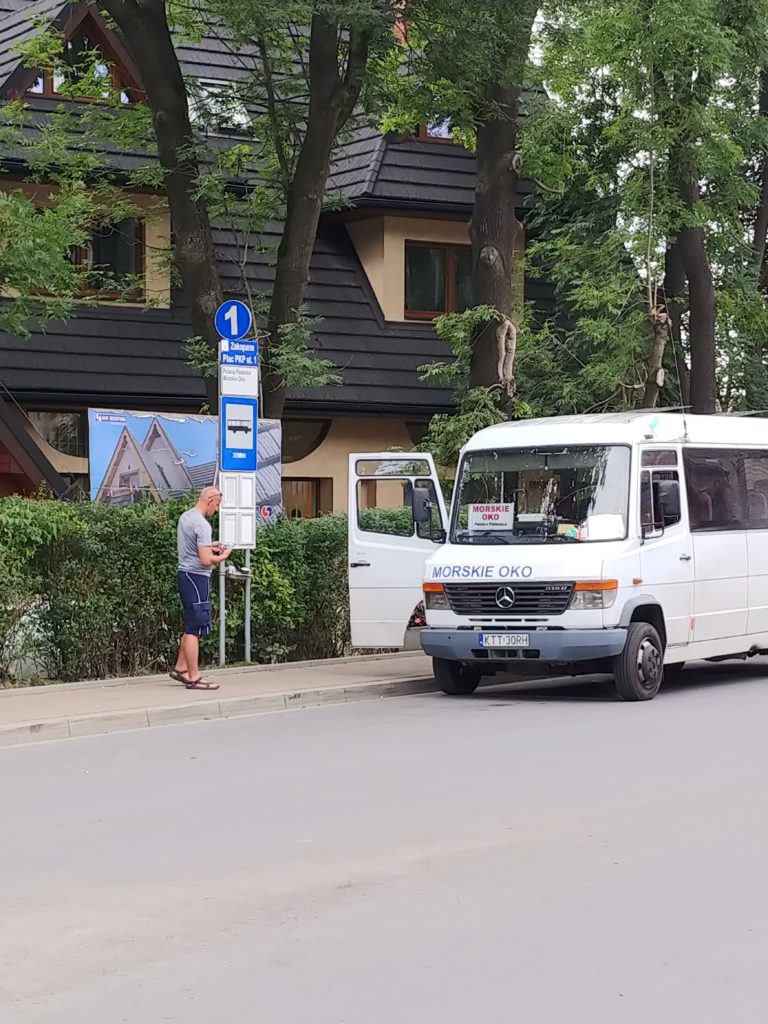
Parking lots next to the mountain trails
We will start with a very popular car park above Rondo Sw. Jana Pawła II on the way to Kuznice. Above the round there is a ban for moving by car, but it does not apply to those willing to park in a large square on the left side of the Przewodnikow Tatrzanskich street, opposite Ksiezowka. Due to the location, it enjoys great popularity, although the system of payment is getting on nerves of many drivers. In the car park, you cannot pay by card, the highest denomination accepted by the machine is 50 PLN, and the daily fee is 25 PLN. Many drivers are helplessly looking for a place where is possible to change the PLN 100 banknote because they cannot leave the parking lot. If you want to park there, it is worth having that in mind and prepare the changed money in advance.
The remaining car parks at the entrances to the trails, near the border of the Tatra National Park are: Kiry (Dolina Koscieliska), Dolina Malej Laki, Wierch Poroniec, Wierch Poroniec Kaniowka (open seasonally from 29 April to 30 September) – these have the same price list, which includes one-day fees in the amount of PLN 10 for a motorcycle, PLN 25 for a passenger car and PLN 50 for a bus. Parking lots in Lysa Polana and Palenica Bialczanska are more expensive, where prices are 10, 30 and 60 PLN respectively. In opposite, the one on Jaszczurowka is free. The problem is to find a place in the above-mentioned car parks in the high season. Very often it happens that around 8-9 am, the police turn back cars from the road connecting Zakopane with Wierch Poroniec and Palenica Bialczanska, heading towards Morskie Oko. There is simply no place to park, cars are standing on the side of the road a few kilometers before the village of Wierch Poroniec. It’s bad to start the trip to the mountains, marching for miles along the road without the roadside and cars in the traffic jam. It is quite dangerous, considering the fantasy of the bus drivers, driving past once the left side, and then right one. They want to finish the course as soon as possible and take more passengers to ride back. And this is a situation where it is definitely better to rely on their services. It will be tight, stifling, you may have to go standing up, the bus will start at the rail station in Zakopane and will ignore subsequent stops, unless someone wants to get off earlier… that’s true. But at least we have a chance to reach the desired destination. On the other hand, the car gives you freedom, in the evening we do not have to run off the trail in a panic, that the last bus will leave and we will be forced to go back by taxi for a minimum of PLN 200. This is true, however, the fact is that in the area of TPN, it is not allowed to walk around after dark from March 1 to November 30, and the last buses are already departing in the dark. In winter it’s a bit different, trails are available after dusk and then the car can actually be a godsend.
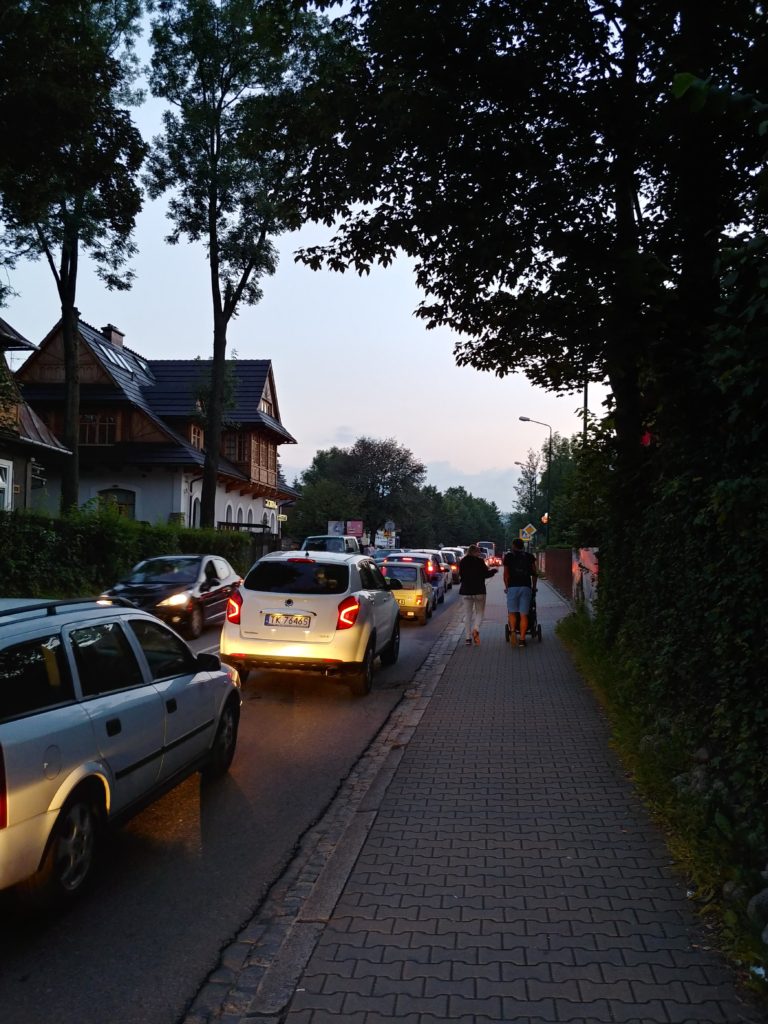
Traffic
When choosing a car as main type of transport in Podhale we must have one very important attribute – patience. In sunny weather, having a car, we can get to know the beautiful routes (we write about them in the text “View tours around Zakopane”), we can visit a lot of places in a short time, and also easily move between one ski lift and the other. However, snowfall or rain make the roads hell. The inhabitant of the metropolis, who did not cover the main road of Bukovina Tatrzanska within three hours knows nothing about traffic jams. It is difficult to find any advice, except one – leave the car in the place of accommodation and let go of exploring places not far away from it. In such situations, also change to the bus will not be a clever solution. It happens that the drivers just get off the vehicles and start a friendly chat on the roadside – why to complain about something that they have no influence on. Roads in Podhale are narrow, but how could be wider, since there are mountains everywhere, on their slopes are situated private parcels with cottages, and bottoms of valleys everywhere flow streams. And even on a wide road it can happen traffic – because of tractor, horse cart or … sheep flock .
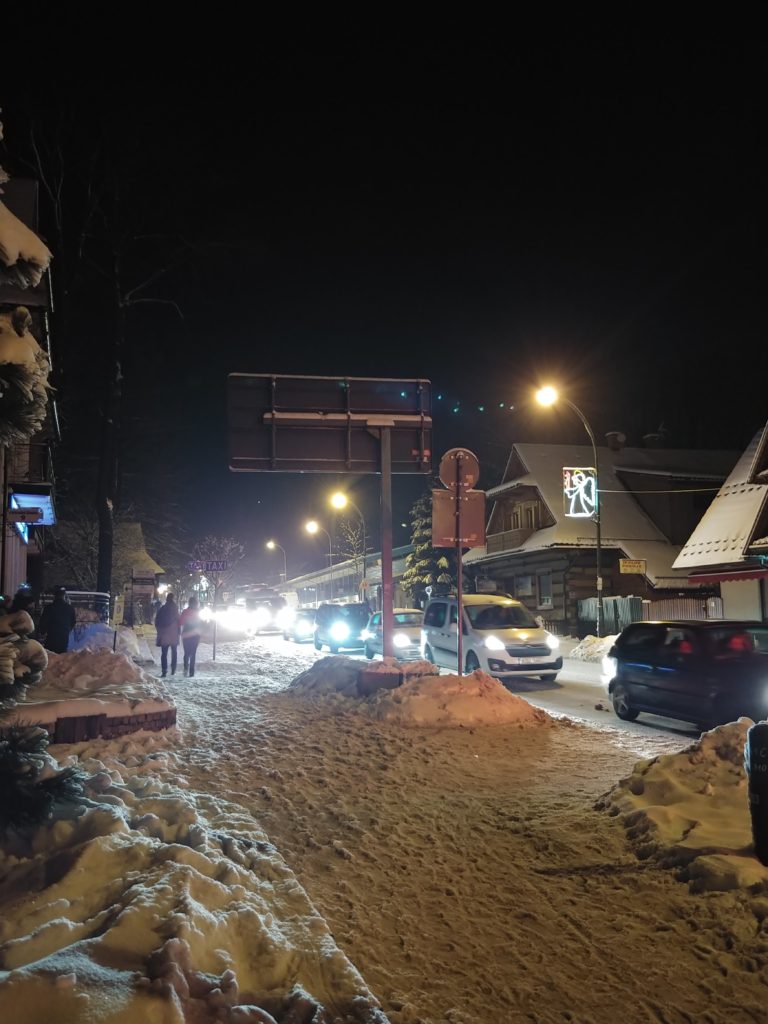
We are aware of the unequivocal answer to the question “better to get around the car or not?” – it simply does not exist. Perhaps in the future, the region’s authorities will take action to make everything more convenient. They will expand public transport, introduce convenient cross-border connections, and at the same time build parking lots on the outskirts of the city. For now, nobody is too comfortable. So let’s decide on which option we choose, taking into account the plan of our stay, mobility and endurance for changing weather, and even the resources of patience. We hope that the tips above will help everyone make the right choice.
Anna Markiewicz
